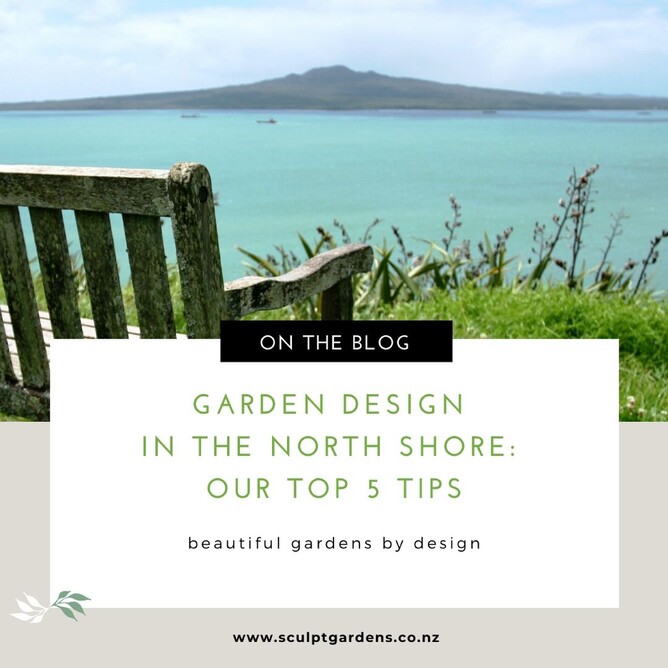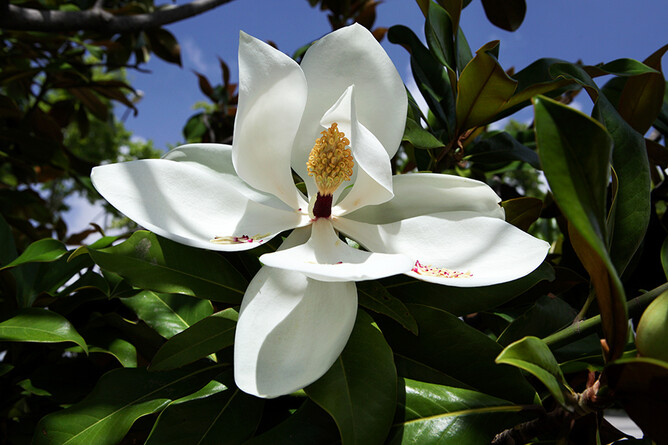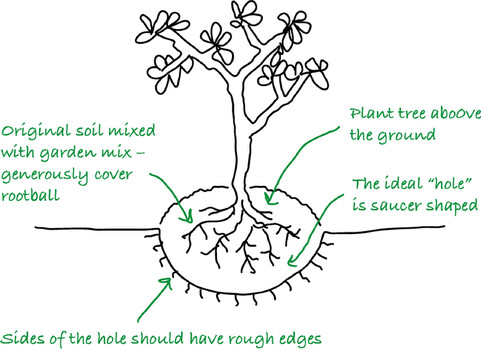We happen to be North Shore Auckland experts! We know the soil, the weather and the best ways to get the most out of your beautiful garden.
Our team at Sculpt Gardens got together and decided to share our top garden design tips specifically for this part of Auckland; with these little know-hows up your sleeve, you’ll be creating a successful and stunning North Shore garden in no time at all.
1 / Know Your Soil
Most gardens on Auckland’s North shore have a clay soil type. Clay soils are often berated for getting waterlogged, causing root infections for plants and being difficult to dig – all of which are true, but there are also positives to the clay soil to take advantage of with the right plants.
The soil in your backyard, if clay, is filled with mineral nutrients such as magnesium, potassium and calcium – nutrients which are vital for healthy plant growth. Clay soils are also able to retain moisture deep beneath the surface which helps plants survive excessive summer heat (if this last summer has been anything to go by, this is a great advantage!).
2 / Choose plants wisely
The plants you select for your garden are so important! There’s a large variety of plants that are clay tolerant, and even a number that will literally thrive in your clay soils. A simple stroll around your neighbourhood and a keen eye will show you a number of plants in neighbouring gardens thriving - take note of the plants you see on repeat, it’s a sign that they love the soil conditions!
Plants that require “good drainage” however are not going to enjoy their roots being surrounded by wet, cold water during the cooler months. Those plants are the ones that you can enjoy in pots instead, or planted above the soil level in a small mound.
Perfect plants for the North Shore clay
| Phormium / flax varieties Dietes grandiflora Star jasmine Pseudopanax varieties Callistemon – bottle brush varieties Manuka Renga renga lillies Prunus varieties Roses Coprosma Salvia | Pohutukawa Rosemary Grevillea Griselinia varieties Pittosporum varieties Gordonia axillaris – fried egg tree Kowhai Magnolia grandiflora (picture below) Tibouchina Thuja smaragd |
3 / Make a plan
Have you decided on your plant personality yet? Our blog 8 Top Tips from A Garden Designer might help you get there!
Embrace the modern touch, a tropical twist or classic NZ natives – think about whether you prefer a loose, informal backyard that’s bright and bold, or a formal garden characterized by tidy, straight lines. Pinterest and NZ gardening sites are great sources for inspiration here - we suggest creating a Pinterest board as a virtual scrapbook that reflects your ideal aesthetic.
Once you’ve decided on your plant personality, be sure to choose a mixture of plants that include:
- Feature plants
- Fillers
- Ground covers
- Hedges
- Climbers
When you’ve decided on suitable clay tolerant plants, it’s worthwhile creating a garden sketch to scale and map out how many plants of each type you need before you buy.
You’ll need a mixture of textures, sizes, shapes & colours… the trick is to bring these together into winning combinations! Try and group similar colours or plant shapes together so you have a theme linking together all plants in one area.
Think In Layers
Choose something up high like a feature tree, followed by fillers like midsized shrubs, and finally a groundcover plant to cover the earth and crowd out those pesky weeds.
4 / Plant correctly for clay conditions
Resist the urge to dig a deep hole and fill it with top soil – unfortunately that’s just digging an early grave for a tree or plant! When it rains, that hole will fill up with water pretty quickly, resulting in drowning your poor new plant.
- Work clay at the right time, ideally in autumn or spring – it should be crumbly, neither sticky nor dry.
- Dig a hole at least twice the width and about half the depth of the rootball; this ensures the plant sits up high out of the ground on a slight mound.
- Seen in profile, the ideal “hole” is saucer shaped; tamp the bottom firmly but rough up the sides with your spade. The sides of the hole should have rough edges so that the plants roots can grow out into the surrounding soil.
- Add the original soil mixed with garden mix back into the hole and generously cover the rootball, which will be sitting higher than the surrounding soil (see 2). Then cover thickly with mulch (10cm depth) right out to the edge of the hole.
Note: We recommend not to use compost for planting in this type of soil – it’s too rich and dissimilar to the surrounding soil, and makes the plant lazy. If too many nutrients are nearby the plant may not make the effort to send new roots down into the soil, and this can result in a weak plant in the future. Garden mix however is a 50 / 50 mix of compost and top soil, and works extremely well. - Over the first 2 summers, give new plants a couple of large buckets of water each week or so to encourage downward root growth. Avoid sprinkling small amounts of water on the surface, as this encourages shallow and upward root growth.
5 / Mulch, mulch, mulch!
Can you tell we LOVE mulch for clay soil? Mulch is hands down the best way to improve the clay soil we so often see on the North Shore. As the mulch breaks down, it adds a layer of ever so needed organic material on top of the clay, which your plants will love. We advise using a mulch which can break down quickly, like a ground hugger mulch which has smaller finer bark pieces.
TOP TIP
Grass clippings, shredded leaves and an annual application of compost to the base of plants will all help to increase the levels of organic material into your soil.
Mulch also reduces the need for water in the hotter months by keeping moisture in the ground longer, and suppresses those pesky weeds too. We recommend using a 10cm deep layer; always take care to leave space around the base of plants, so that the mulch doesn’t rot against the base of the plant.
There you have it! Our experience on the North Shore passed onto you for your next garden design, taking into account the soil, weather and ideal plants for this beautiful part of Auckland. Keep these tips in mind when you’re planning your garden and you’ll be well on your way to embracing the unique conditions that make the North Shore our specialty!










